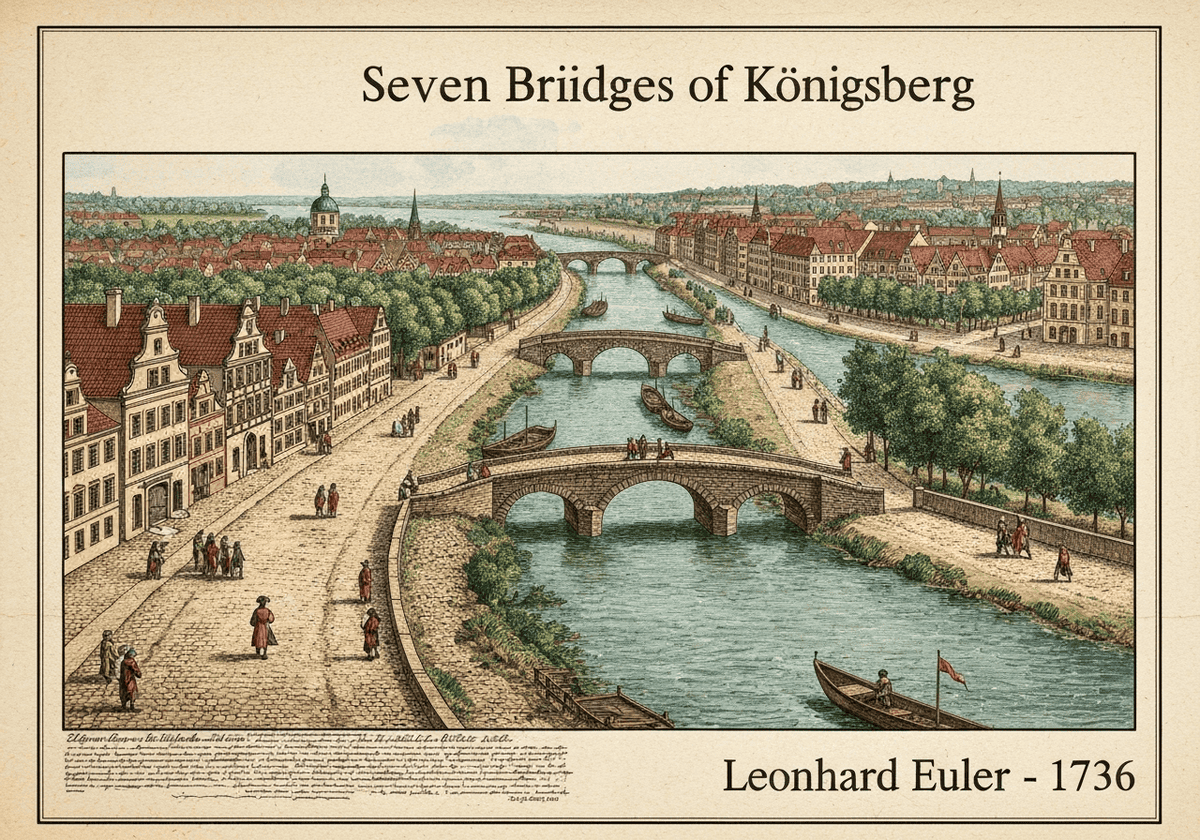这是数学史上一个著名的问题。1736 年,莱昂哈德-欧拉(Leonhard Euler)解决了这个问题,奠定了图论的基础,并预示了拓扑学的思想。这个问题问的是,哥尼斯堡市的七座桥是否可以在一次旅行中全部走完,而不需要折返两次,并且旅行的终点还是起点的同一陆地。


(generate image for illustration only)
这是数学史上一个著名的问题。1736 年,莱昂哈德-欧拉(Leonhard Euler)解决了这个问题,奠定了图论的基础,并预示了拓扑学的思想。这个问题问的是,哥尼斯堡市的七座桥是否可以在一次旅行中全部走完,而不需要折返两次,并且旅行的终点还是起点的同一陆地。
The city of Königsberg in Prussia (now Kaliningrad, Russia) was set on both sides of the Pregel River and included two large islands which were connected to each other, and to the mainland, by seven bridges. The problem was to find a walk through the city that would cross each of those bridges once and only once. Euler’s insight was to abstract the problem by stripping away all features except the land masses and the bridges connecting them. He represented each of the four land masses as a point (a vertex) and each bridge as a line (an edge) connecting the vertices. The resulting mathematical structure is a graph. Euler realized that a path traversing each edge exactly once (an Eulerian path) is possible only if the graph is connected and has zero or two vertices of odd degree (degree being the number of edges connected to a vertex). The Königsberg graph had four vertices, all of which had an odd degree (one with degree 5, and three with degree 3). Therefore, Euler proved that such a path was impossible. This solution is considered the first theorem of graph theory and one of the first results in topology, as it does not depend on measurements or specific geometry, but only on the connectivity of the graph.
迎接新挑战
机械工程师、项目、工艺工程师或研发经理
可在短时间内接受新的挑战。
通过 LinkedIn 联系我
塑料金属电子集成、成本设计、GMP、人体工程学、中高容量设备和耗材、精益制造、受监管行业、CE 和 FDA、CAD、Solidworks、精益西格玛黑带、医疗 ISO 13485
柯尼斯堡七桥
(如果日期不详或不相关,例如 "流体力学",则对其显著出现的时间作了四舍五入的估计)。
相关发明、创新和技术原理
{{标题}}
{%,如果摘录 %}{{ 摘录 | truncatewords:55 }}
{% endif %}